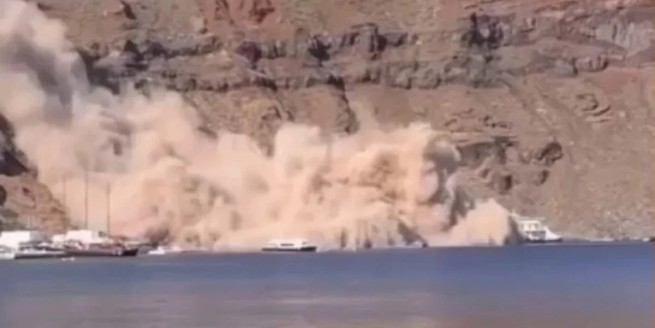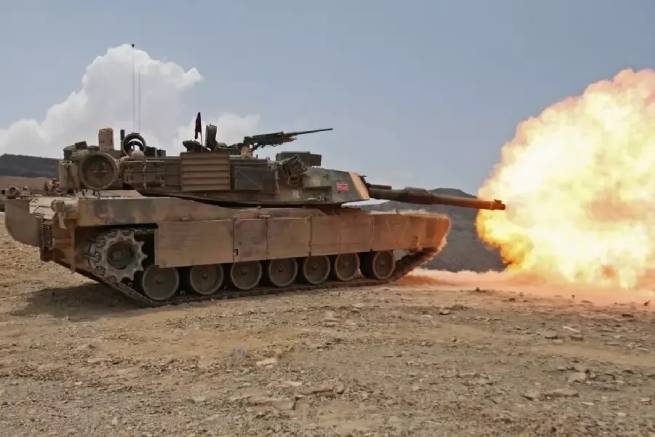In the UK, they reported on the supply to Ukraine, along with the Challenger-2 tanks, of armor-piercing shells containing depleted uranium. Moscow accuses Britain of spreading “weapons with a nuclear component”, in London they said that this was disinformation.
What is it – shells with depleted uranium? Are they related to nuclear weapons?
The isotope U-235 is extracted from natural uranium ore, it is used both as fuel for reactors and in nuclear weapons. This process is called enrichment. The content of the “useful” isotope in the ore is approximately 10%. The remaining 90% contains negligible U-235 isotope and consists mainly of weakly radioactive U-238. This is depleted uranium – the so-called waste from the enrichment process.
It has a very high density, that is, products made from it are much heavier than, for example, steel of the same size. This means that the energy for breaking through the armor of such a projectile is very high.
Depleted uranium does not explode, but it is pyrophoric *: small fragments that have pierced the armor easily ignite, so that the projectile from this material turns out to be armor-piercing incendiary. And since this material is actually a waste from uranium enrichment, it is relatively cheap and available in large quantities in countries with a developed nuclear industry. All these qualities attracted the US military in the early 1970s, when it was necessary to look for ways to deal with a new generation of Soviet tank armor.
At the same time, the United States practically abandoned the use of other metals for armor-piercing cores, and depleted uranium is used not only in tank shells, but also in smaller-caliber quick-firing guns – 25-30 mm, which are used on infantry fighting vehicles and attack aircraft. In the 80-90s, such ammunition entered service with other states, incl. UK and USSR.
The US first used munitions during Desert Storm in 1991. According to Pentagon data, American and British tanks fired several thousand of these shells, and hundreds of thousands of aircraft. Then the Pentagon admitted that similar projectiles were used in the former Yugoslavia, in Syria and Iraq. Officially unconfirmed data indicate the use of DU in Somalia in the 1990s and in Afghanistan after 2001.
How legal are the deliveries of British shells to Ukraine? Depleted uranium is not subject to nuclear non-proliferation rules. So, from the point of view of international law, shells with depleted damage are no different from any other. There are no agreements that would regulate the supply of specific shells with DU.
For this reason, according to Western experts, Moscow’s protests are groundless. If, moreover, we take into account that shells with depleted uranium have also been in the ammunition load of Russian tanks for a very long time. John Erath, senior director of policy at the Center for Arms Control and Non-Proliferation, explained in conversation with euronews:
“They are not considered nuclear weapons. They do not have a nuclear component. And therefore they are not subject to nuclear non-proliferation treaties. They are subject to the same restrictions as any conventional ammunition. <...> So Russia’s statement on the transfer nuclear capability is completely wrong.”
Although Western experts believe that the Kremlin can still use these supplies as an “excuse” for the threat to use its own nuclear weapons. John Erat says:
“Russia says that using something that can be linked to a nuclear weapon if desired increases the likelihood that we, Russia, will use nuclear weapons. Almost from the start of the war, we have seen threats that Western support for Ukraine could lead to the use of nuclear weapons, and it is the West that is pushing the world down this terrible path. [с российской стороны]but the Russian government has repeatedly used this tactic.”
DU is much less radioactive (about 40%) than uranium ore, not to mention purified U-235. In addition, in tank shells, the core itself is closed by a pallet and a fairing. Until fired, according to the military, such projectiles are safe, subject to basic safety rules: weak radiation is not able to penetrate skin and clothing.
But if he breaks through the armor, a cloud of tiny fragments, almost dust, forms. It is she, already consisting of uranium oxides, that is dangerous: both for the crew of the affected vehicle, as it can get into the lungs and gastrointestinal tract, and for civilians, because it can get into the soil and water.
The fact that shells with DU were used in the Balkans in the mid-90s became known only in 2001. Belgium, Germany, Italy, and France turned to Washington for clarification. But the military insisted on their own: the shells are safe. In the United States at the same time, in 2001, they conducted a study of combat veterans and came to the conclusion that the body of the affected soldiers does not and never had depleted uranium in an amount dangerous to health.
Nevertheless, a number of organizations have been calling for a ban or restriction on the use of DU projectiles since the early 2000s. According to activists, if there are sometimes discussions about the health of soldiers, then the possible long-term consequences for civilians who return to land where there were battles with the use of DU, for example, in Iraq, where such shells were used in huge quantities for two years, are completely behind the scenes. wars – in 1991 and since 2003.
Other experts believe that the danger of depleted uranium is exaggerated, at least for Ukraine. John Erat says:
“Battlefields will suffer environmental devastation anyway. The environmental problems caused by the war are so serious that people should be concerned about that, and not the limited number of DU shells.”
* Pyrophoricity – the ability of a solid material in a finely divided state to self-ignite in air in the absence of heating.







More Stories
Today the world remembers the accident at the Chernobyl nuclear power plant
A trial has begun in the case of a fatal accident involving Dora Bakoyanni's car.
Poll: which European countries are ready to defend their homeland to the last